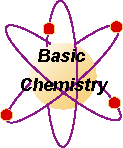Hot Pack and Cold Pack
Purpose:
The heating or cooling effects of hot or cold packs is due to ionization and not a chemical reaction. This is a physical change.
Discussion:
The heating or cooling effects of hot or cold packs is due to ionization and not a chemical reaction. This is a physical change.
Discussion:
Heat packs contain 40 g of calcium chloride or magnesium sulfate per 100 ml of water. The chemical is kept separated from the water until heat is needed. The temperature will rise to about 90oF and last for 15 to 30 minutes Heat packs are used by people who are outdoors in cold weather such as fisherman, skiers, construction workers, etc..)
Cold packs contain about 30 g of ammonium nitrate per 100 ml of water. The temperature will drop to around 32oF and last for 15 to 30 minutes. The cold pack would be wrapped in a towel being applied to the injured body part of an athlete.
Why?
What is the advantage of a cold pack over using ice?
How long should cold be used on an injury before switching to warmth?
Procedure:
Put on chemical resistant goggles, gloves and aprons after reading the MSDS sheets (click on internet icon to get MSDS sheets).
Cold Pack
- Weigh out 50 grams of ammonium nitrate directly into a ziplock bag.
- Measure out 100 ml of water.
- Dump the water into the bag containing ammonium nitrate. Squeeze out the air and seal it.
- Mix the ammonium nitrate and water by squeezing the bag.
- Check the temperature by wrapping the bag around a thermometer.
Cold Pack
Disposal:
Wash the chemical down the drain with lots of water. Rinse the bag with water and pour the contents down the drain. Dispose of the bag in the trash.
Endothermic Reaction
- Weigh out 32 grams of barium hydroxide (Ba(OH)2. 8 H2O)
and 11 grams of ammonia chloride (NH4Cl) and mix them in a 250 ml Erlenmeyer flask by shaking the flask gently.
- You will soon detect the smell of ammonia, a liquid will start appearing in the flask and the flask will cool rapidly. Do not directly inhale the odor but waft the air toward your nose. Within a minute or two the temperature will be below -20oC and will remain that way for several minutes.
- Wet the top of a board with ice water and place the flask on the board. The flask will freeze to the board quickly.
- Do not allow skin to be in contact with the flask.
Disposal:
The barium hydroxide, ammonium chloride and barium chloride are toxic and should not be touched or ingested. If touched, wash immediately with water. Be sure to wash hands afterward. The products can be washed down the drain with lots of water.
Thanks to Bob Allen of Duanesburg Jr-Sr. High School for the Endothermic Reaction experiment.
Ba(OH)2. 8 H2O(s) + 2 NH4Cl(s) + heat--->
BaCl2(aq) + 2 NH(g) + 8 H2O(l)
Back to top
Endothermic Reaction


